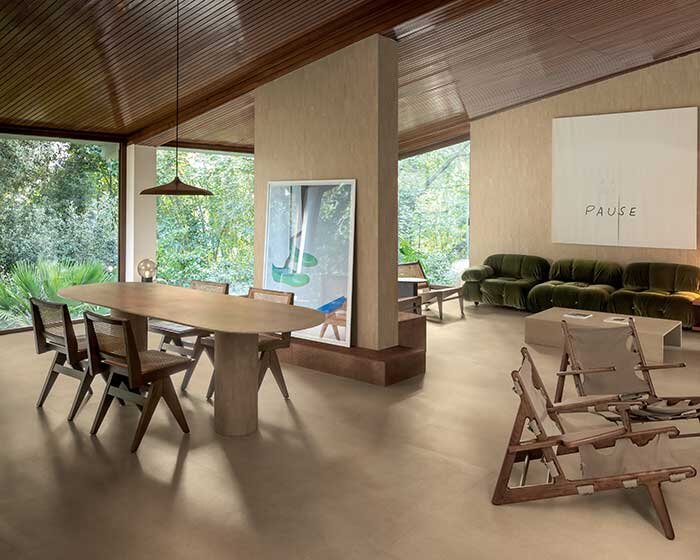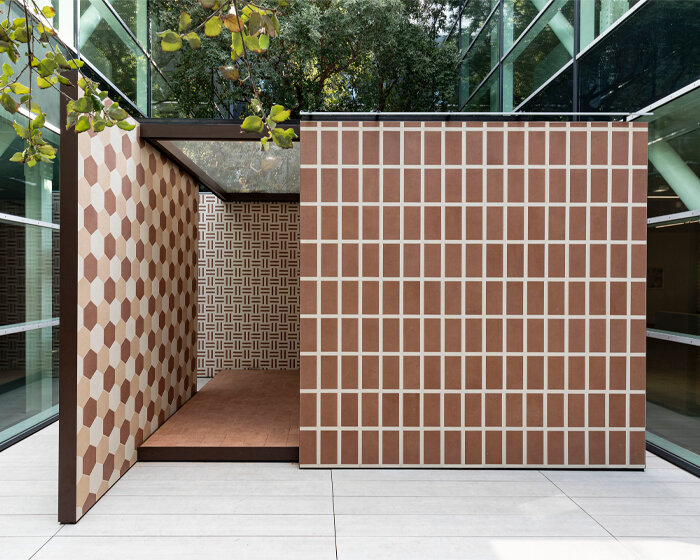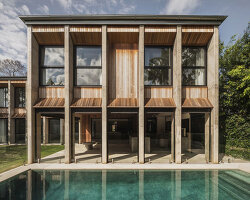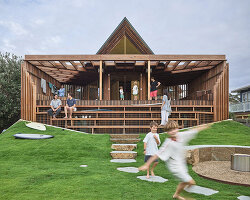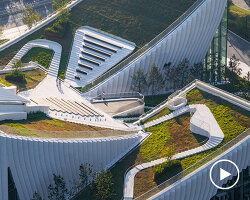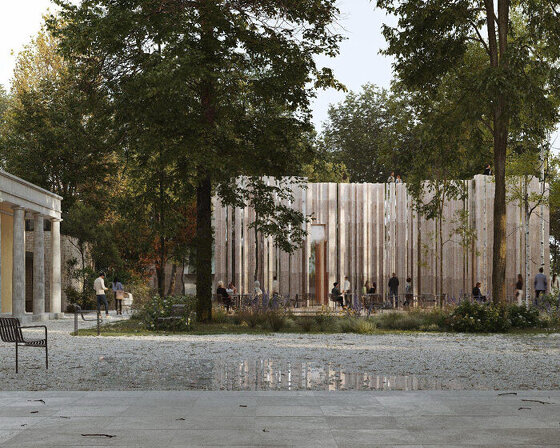
restful spaces echo the atmosphere of reclining beneath a tree in the sunlight

the timber screens result in delicately patterned shadows
KEEP UP WITH OUR DAILY AND WEEKLY NEWSLETTERS
happening now! with sensiterre, florim and matteo thun explore the architectural potential of one of the oldest materials—clay—through a refined and tactile language.
lina ghotmeh notes that the permanent qatar pavilion will offer a platform for diverse arab voices at the venice biennale.
discover all the important information around the 19th international architecture exhibition, as well as the must-see exhibitions and events around venice.
discover ten pavilion designs in the giardini della biennale, and the visionary architects that brought them to life.
connections: 30
we meet carlo ratti in venice to talk about this year's theme, his curatorial approach, and architecture’s role in shaping our future.

 images by
images by 

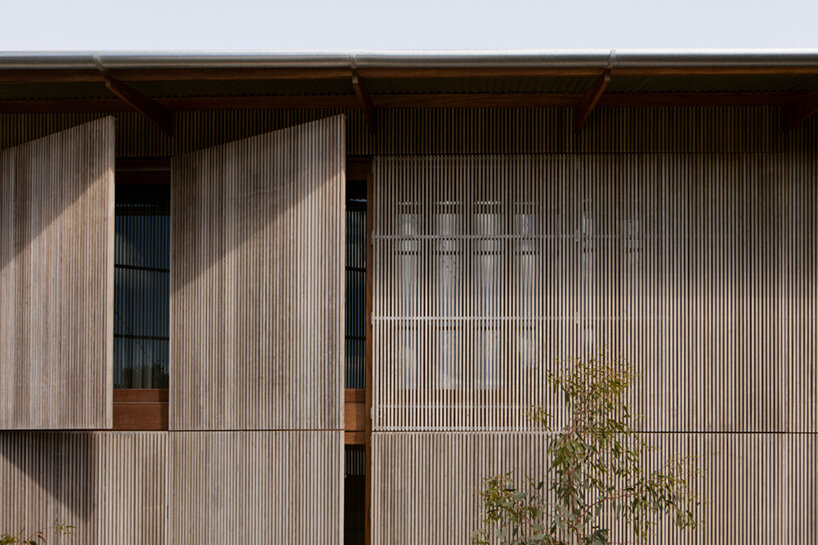
 Eldridge Anderson Architects designs the project in celebration of the site’s eucalyptus tree
Eldridge Anderson Architects designs the project in celebration of the site’s eucalyptus tree inside, the space is flooded with sunlight
inside, the space is flooded with sunlight






